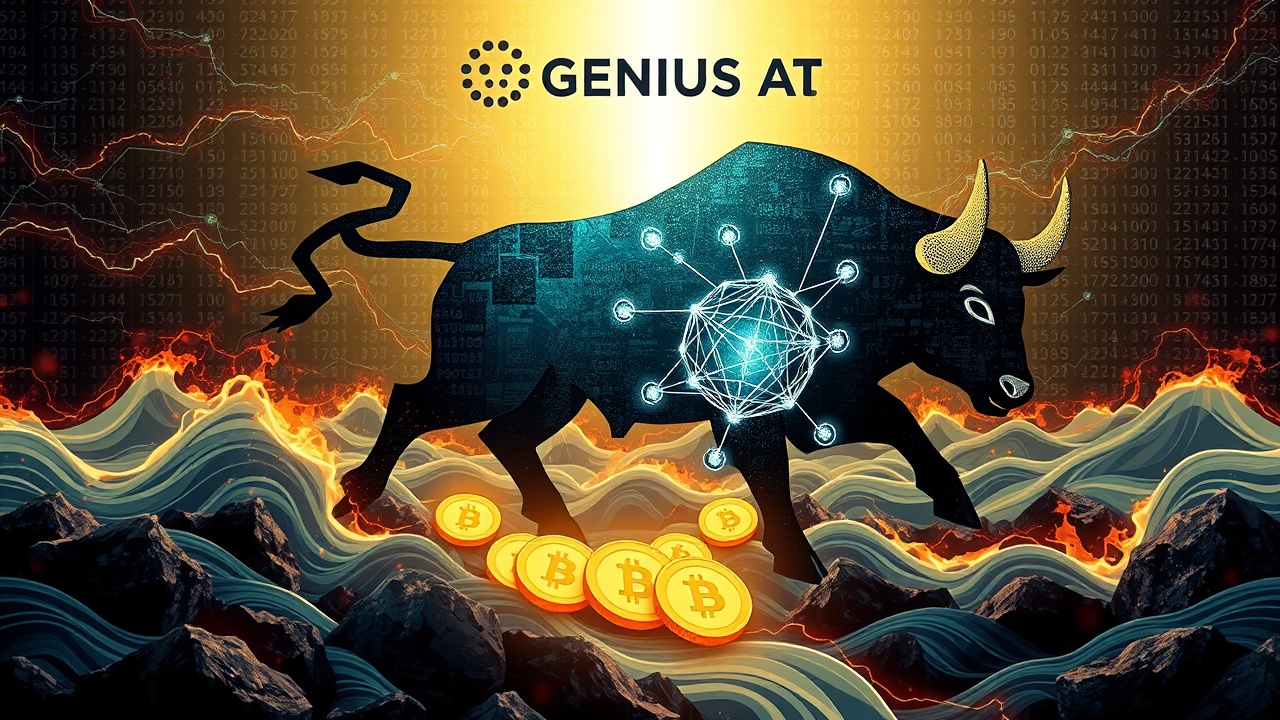Impact of the GENIUS Act on Financial Markets
The recent approval of the GENIUS Act has sent shockwaves through the financial markets, particularly impacting the realm of stablecoins. Remarkably, Circle, the issuer behind the USDC stablecoin, made a significant entrance onto the New York Stock Exchange this month, witnessing an astonishing increase of over 200% in its stock price on the very first day. From an initial issue price of $31, the shares skyrocketed to roughly $240.6, reflecting a staggering total growth of 774%. This meteoric rise illustrates not only the potential of stablecoin issuers in the current economic landscape but also signifies a broader acceptance and role of stablecoins within the global financial architecture.
Market Overview and Adoption
Currently, the market capitalization for stablecoins has surpassed $250 billion, and their annual transaction volumes exceed those of established banking giants like Visa and Mastercard. The number of active stablecoin addresses has ballooned to 261 million, indicating a widespread adoption that parallels the historical rise of the Internet in the 1990s—highlighting the critical moment as regulation accelerates market maturity.
Financial Sector Reassessment
The GENIUS Act’s passage marks a pivotal point in the financial sector, prompting a reassessment among various players, including traditional banks and tech firms. They are not only embracing compliant stablecoins but also actively pursuing entry into this burgeoning market. Traditional finance entities like JPMorgan and Goldman Sachs are now forging partnerships with compliant stablecoin issuers to enhance their offerings in real-time payment solutions. JPMorgan plans to apply for a formal stablecoin license, bolstering its services and tapping into the increasing customer demand for cross-border settlements.
Emerging Opportunities in the Crypto Sphere
In the cryptocurrency sphere, emerging companies are also benefiting from this shift. Circle is leading this charge with its compliance-focused strategy, utilizing U.S. Treasury bonds as reserve assets, thus positioning itself as a pioneer of U.S. Dollar 2.0. Meanwhile, innovative firms like StableBet Technologies are leveraging stablecoins in on-chain gambling platforms, indicating a diverse application of this technology.
Transformative Changes in the Investment Landscape
The investment landscape is undergoing transformative changes as well. In the face of regulatory advances, offshore crypto projects are experiencing pressure to enhance transparency and fulfill compliance requirements, while the demand for compliant solutions continues to grow. Companies such as Paxos and TrustToken are accelerating compliance adaptations, aiming to secure federal-level stablecoin issuance rights.
Strategic Moves by Technology Firms
This reshaping isn’t confined to the crypto realm; technology and internet powerhouses are also strategically entering payment ecosystems. Firms like Ant Group are obtaining compliance licenses across multiple jurisdictions, enhancing payment efficiency, especially in rapidly digitizing markets like Southeast Asia. Similarly, tech giants in the U.S. are exploring stablecoin integration in their payment frameworks, with notable alliances forming to facilitate digital transactions.
Future of Stablecoins and Real Asset Tokenization
The GENIUS Act has not only opened avenues for stablecoin-backed services but also catalyzed the potential for tokenizing real assets (RWA), projecting the RWA tokenization market to exceed an impressive $16 trillion by 2030. This legislative move establishes regulatory frameworks enabling stablecoins to be backed by tangible assets, creating a lucrative intersection between traditional and digital finance.
Reevaluation of Traditional Financial Systems
As the traditional financial landscape adapts to these innovations, the relevance of the SWIFT system is being reevaluated. Stablecoins are reshaping cross-border transactions—we are seeing significant increases in peer-to-peer transactions facilitated by USDT, underscoring their practical significance in both high-inflation nations and among unbanked populations.
Conclusion: A New Era for Stablecoins
The GENIUS Act heralds a new era for stablecoins, propelling them beyond mere speculative instruments to essential components of a globally integrated financial ecosystem. This seismic shift presents thoughtful implications for individual investors, financial institutions, and regulators alike, particularly as concerns arise about centralization versus the promise of decentralization in financial technology. As the landscape evolves, the ongoing dialogue around these developments will shape the future of financial trust and accountability, marking a potentially revolutionary shift in wealth distribution within the global economy.
In conclusion, the GENIUS Act is serving as a cornerstone for the structure of future markets, compelling all participants to understand and adapt to this transformative landscape, as opportunities for investment and innovation present themselves in the wake of regulatory clarity.
For further reading on this topic, one can explore detailed analyses of how the GENIUS Act positions stablecoins within the global economy and examine the new developments in regions like Hong Kong regarding stablecoin legislation.




